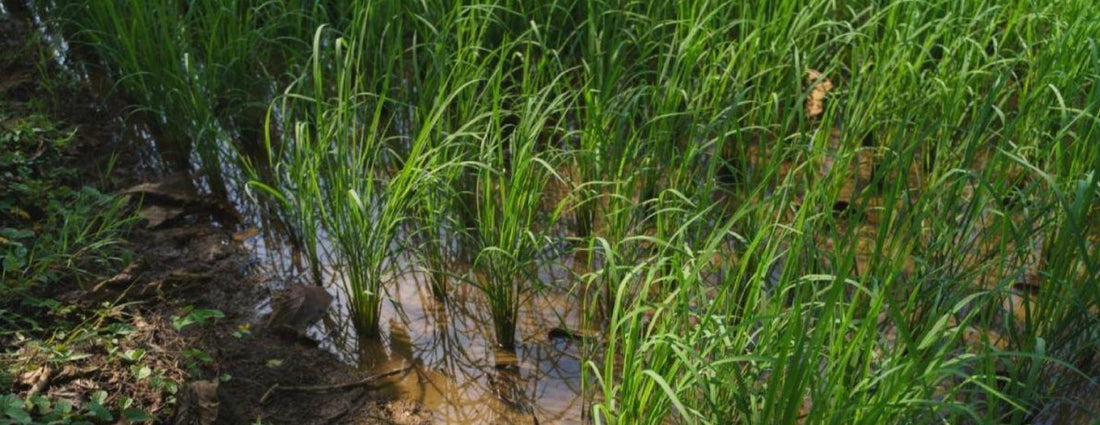सिंचाई प्रणालियाँ आधुनिक कृषि प्रबंधन का एक महत्वपूर्ण घटक हैं जो फसल की गुणवत्ता और पैदावार को अनुकूलित करती हैं।
सिंचाई की बदौलत रेगिस्तान में भी कुछ सबसे ज़्यादा फ़सल उगाने वाले क्षेत्र फलते-फूलते हैं। उदाहरण के लिए, एरिज़ोना का युमा काउंटी, भौगोलिक रूप से सोनोरन रेगिस्तान का हिस्सा है। फिर भी, युमा काउंटी के किसान अमेरिका में 90% से ज़्यादा शीतकालीन लेट्यूस और क्रूसिफेरस फ़सलें उन खेतों से उगाते हैं जो कोलोराडो नदी से 100% सिंचित हैं। लेकिन, घटते जल संसाधनों के कारण, किसान अपनी सिंचाई प्रणालियों को बेहतर बनाने के लिए डिजिटल कृषि प्रबंधन समाधानों की ओर रुख कर रहे हैं। AGRIVI जैसे आधुनिक कृषि प्रबंधन समाधान, सिंचाई पद्धति, सिंचाई सेवा, प्रणाली या सिंचाई तकनीक की परवाह किए बिना, सभी प्रकार की कृषि सिंचाई प्रणालियों की निगरानी करते हैं।
"सिंचाई स्वयं बढ़ती फसलों के लाभ के लिए नमी का कृत्रिम वितरण है। सिंचाई के बिना खेती को वर्षा आधारित माना जाता है और इसे अक्सर शुष्क भूमि खेती कहा जाता है।"

इसलिए, सिंचाई प्रणालियाँ, बस वह तरीका है जिसका उपयोग किसान पानी को उसके स्रोत से अपने खेतों तक पहुँचाने के लिए करते हैं। सिंचाई का पानी भूजल स्रोतों, जैसे जलभृत, झरने और कुएँ, या सतही जल स्रोतों, जैसे नदियों, तालाबों या झीलों से आता है। कृषि जैसे आधुनिक कृषि प्रबंधन समाधान, सिंचाई पद्धति, सिंचाई सेवा, प्रणाली या सिंचाई तकनीक की परवाह किए बिना, सभी प्रकार की क्षेत्रीय सिंचाई प्रणालियों की निगरानी करते हैं।
वर्तमान में किसान 5 प्रकार की सिंचाई प्रणालियों का उपयोग करते हैं:
- किसानों द्वारा उपयोग की जाने वाली सिंचाई प्रणालियों के पांच मुख्य प्रकार हैं।
- सतही सिंचाई (जिसे बाढ़ या फरो सिंचाई भी कहते हैं)।
- ड्रिप या सूक्ष्म सिंचाई।
- स्प्रिंकलर सिंचाई.
- केंद्र धुरी सिंचाई.
- उप-सिंचाई.
- सतही सिंचाई प्रणालियाँ.
- सतही या बाढ़ सिंचाई प्रणालियाँ मानव की सबसे प्रारंभिक सिंचाई पद्धति है।
सतही सिंचाई प्रणाली, आमतौर पर नहर जैसे जल स्रोत से आने वाले अपवाह जल से, खेती वाले खेत को भर देती है। खेतों को जल स्रोत से धीरे-धीरे ढलान पर (या सीढ़ीनुमा भी बनाया जा सकता है) ढालू बनाया जाता है, ताकि पानी पूरे क्षेत्र में बह सके। फसलें आमतौर पर समानांतर क्यारियों में उगाई जाती हैं, ताकि पानी पौधों की जड़ों के बीच बनी खाइयों से आसानी से बह सके।
फरो सिंचाई बाढ़ सिंचाई से भिन्न है, केवल इतना अंतर है कि इसमें सिंचाई की स्थापना पाइप या नली के प्रयोग से की जाती है, जिससे पानी को प्रारंभिक स्रोत से दूर ले जाया जाता है।
ड्रिप या सूक्ष्म सिंचाई प्रणाली:
ड्रिप या सूक्ष्म सिंचाई प्रणाली में, पानी पौधे की जड़ क्षेत्र के ठीक बगल में ज़मीन पर बिछाए गए पाइपों के एक नेटवर्क से होकर बहता है। धीरे-धीरे टपकने वाले एमिटर या सूक्ष्म-स्प्रिंकलर हेड पानी पहुँचाते हैं। चूँकि ड्रिप सिंचाई प्रणाली पानी इतनी सटीकता से पहुँचाती है, इसलिए इसमें अन्य सिंचाई विधियों की तुलना में कम पानी लगता है।
ड्रिप या सूक्ष्म सिंचाई प्रणालियों को चलाने के लिए ज़्यादा दबाव की ज़रूरत नहीं होती। इसलिए, इन्हें कम पानी के दबाव पर भी इस्तेमाल किया जा सकता है। ड्रिप सिंचाई प्रणालियाँ अपेक्षाकृत नई हैं, लेकिन तेज़ी से फैल रही हैं, खासकर सब्जियों और फलों जैसी विशेष फसलों के उत्पादन में। हालाँकि, उच्च लौह सामग्री वाले क्षेत्रों के किसानों को एमिटर के बंद होने के कारण ड्रिप सिंचाई और सूक्ष्म-स्प्रिंकलर प्रणालियों का उपयोग करने से बचना चाहिए।

